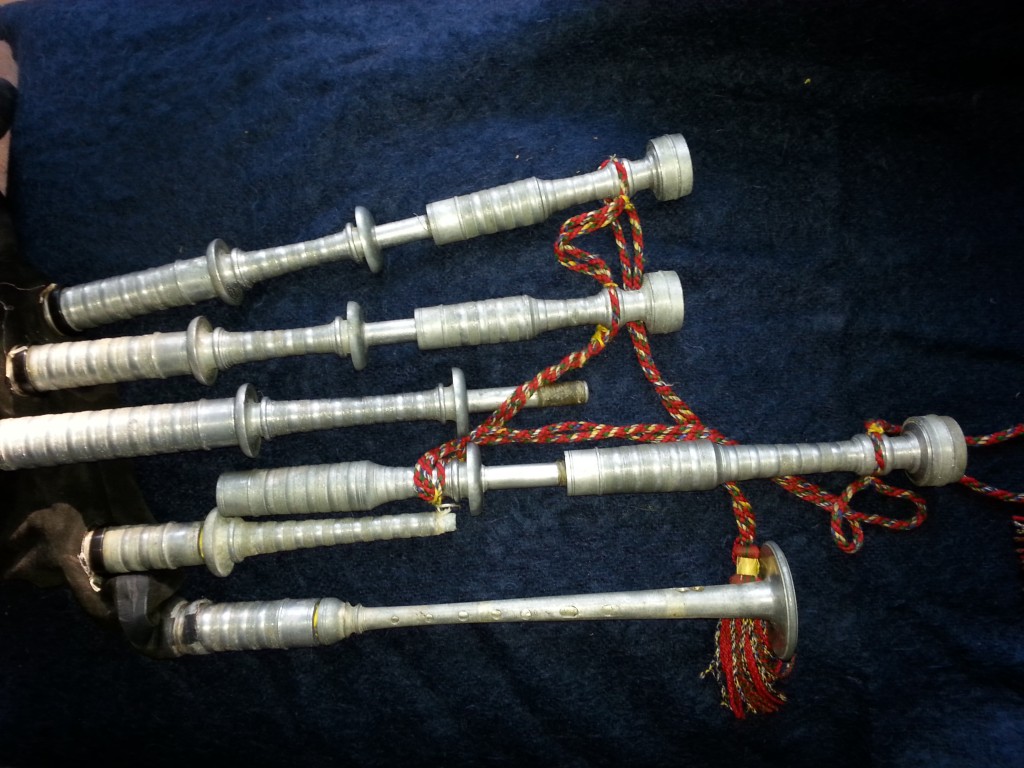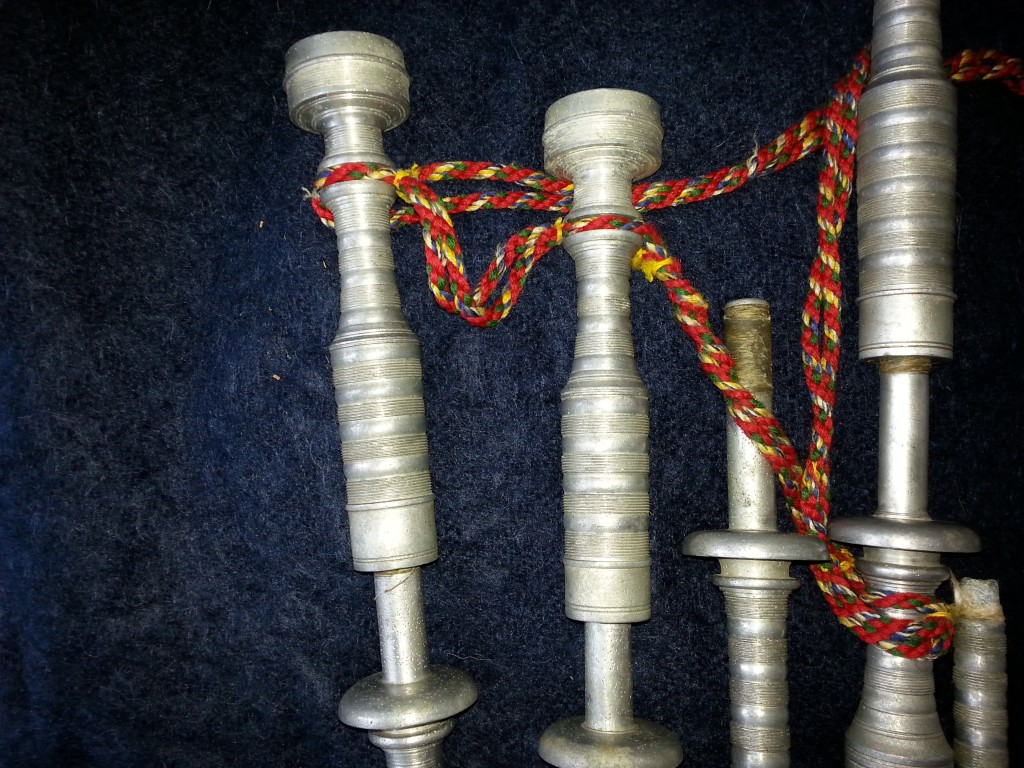By Barry Shears
Over the years pipe makers have tried using different materials to produce instruments, especially now with the scarcity of seasoned ebony and blackwood. This is not new. North American pipe makers used a variety of local woods such as ash, maple, applewood and even oak to make replacement parts for existing bagpipes as well as making full instruments. In Cape Breton an amateur piper, named Charlie Hooper, even made a set from bamboo, but this set was quite rudimentary and as one piper told me, “only Charlie could get a tune out of it!”
My first exposure to non-traditional materials for bagpipes was in the early 1970s when I spent my summers as an army cadet, playing with the 2nd Battalion, Royal Canadian Regiment pipe band at CFB Gagetown, New Brunswick. Two local pipers Gerry Gosbee and Jim Patterson were experimenting with Nylatron as a replacement for blackwood. Nylatron was a grey hard plastic which was developed by Polypenco. It could be machined and the result for bagpipes made from this material was a very smooth bore. The downside was, it didn’t absorb moisture and so as moisture from the piper’s breath condensed on the inside of the drone it dripped down to the reeds affecting the tone. The grey colour never really caught on although some early Warnock chanters were also made of this grey material, eventually the colour was changed to black and today this has been widely accepted by pipe-makers and pipers everywhere.
In Scotland, pipe makers such as Robertson were experimenting with tropical woods such as Brazilian Kingwood, but perhaps the most revolutionary material used in the early 20th century was a metal alloy. I recently had an opportunity to examine a set of metal bagpipes made by David Glen, Edinburgh and thanks to the current owner, Jim Barrie, of Duncan, British Columbia, here is a little background information on the instrument.
Jim Barrie acquired the pipes in New Zealand when he was with the Auckland Police Pipe Band. The pipes had been donated to the band may years ago and when the decision was made to sell the pipes Jim bought them. In 1972 the history of the instrument started to unfold. As Jim says:
“While on a band trip to Scotland in 1972, I spotted a chanter made of the same material in the window of Glen’s Pipe Shop on the High Street in Edinburgh. Natural curiosity took me inside. There I met Andrew Ross, although (I believe) in his 80’s at the time was still working at Glen’s shop on the High Street. He told me that he was an apprentice in the shop when these pipes were made. There were 12 sets made for the 9th HLI’s desert campaigns during World War I. I had always thought that they were made of an aluminum alloy of some sort. However, I was later told by Andrew Ross’ daughter that she believed that they were made of nickel. I am sure that a metallurgist could tell us what the material is. Some years ago, I heard that there was another set in Alaska. “
Since every part of the bagpipe is made of metal, they are very heavy. But what of the sound? Jim played them recently at the Piper’s Club meeting and the drones were quite nice when played with a modern chanter, as one would expect from a set of David Glen pipes. The original chanter has had extensive work applied to it to allow it to play a modern scale but the alterations, which included adding / expanding the “Devil holes” haven’t succeeded. An interesting feature of the bass drone on this bagpipe is a rotating sleeve in the top section. According to Jim “When you turn the insert, it narrows the bore. This would be useful if you had a reed that was rough or double-toning. I think it would also mellow the tone somewhat and alter the tuning position. “
With an increasing number of polypenco bagpipes on the market, and the stability of the material, pipe makers may want to try and experiment more with this early 20th century innovation.
The Glen family had a long and storied career as bagpipe makers and music publishers. It all began with Alexander Glen in the early 19th century and morphed into two well respected firms, David Glen and sons and J&R Glen in the 20th century. David Glen was certainly innovative and his metal pipes are a testimony to his enduring craftsmanship.
APNA would like to hear from anyone who may have more information on these metal bagpipes, or maybe someone who knows of existing sets. It would be interesting to now what happened to the remaining sets or even if they survived the First World War.
Barry Shears is a Cape Breton piper currently residing in British Columbia, a researcher and the author of three tune-books arranged for pipers. His specialty is traditional dance music played in the Gaelic style. He is also author of Dance to the Piper; The Highland Bagpipe in Nova Scotia. Barry is a founding member of Alternative Pipers of North America.

